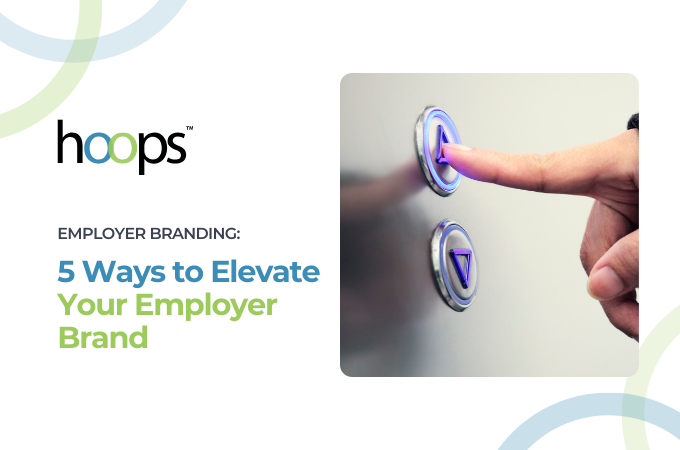Smart tools and processes enable successful management of this highly consequential—and final—stage of the talent experience.
At HoopsHR, we project that smart data-driven decisions will soon underlie every phase of the talent experience in our country’s best-managed workplaces. The transition is well underway in 2018, at organizations of all sizes. Through talent management platforms like HoopsHR, employers now have access to the best practices being implemented in America’s best places to work, and the tools to refine them for their own distinct needs. These encompass every moment from the first contact a job candidate has with an employer to what happens on the final day of employment, and beyond.
The Separation is a Critical Component of the Talent Experience
Managing this final talent experience well results in the goodwill of departed employees and the betterment of your employer and consumer brands. Well-informed HR organizations treat this process as if every moment will be remembered and shared with others. Many have dedicated personnel just for this purpose. In an age of democratized and socialized media, it has never been more important to be thoughtful, considerate, and even strategic in how you handle employee departures.
The consequences of poorly managing talent separation have never been greater:
- Poor reviews from former employees on the sites job candidates use to research employers: Glassdoor, Great Place to Work, Indeed, Vault, and The Job Crowd
- Plummeting employer ratings on each of these sites
- Souring of current employees who hear about the poor experience
- Poaching by former employees of your best talent
- Declining employee morale
- Inability to hire the most selective job candidates
Unfortunately, managing employee voluntary and involuntary separations is not simply a matter of studying general best practices. Though any organization could make considerable improvements in their communications and documentations, it is the fine tuning of these practices to variables including industry, company size, and workforce makeup that makes a critical (and measurable difference). Talent management software enables Human Resources departments and the managers of employees to precisely calibrate a formal and comprehensive process for optimal results. In addition, talent experience platforms automate many of the steps, enabling HR to manage the separation in a more efficient time frame.
Compulsory Steps in the Separation Experience
The following are the necessary steps in the talent separation experience, including tasks that should be informed by data analytics through a talent experience platform:
Documenting Reasons (Involuntary only): This component involves the employee’s manager or superior documenting specific reasons that may lead to termination over a time period that factors in the employee’s position, level of authority, and other pre-determined variables. The time period can range from a few weeks to two years. Documentation includes evidence of those reasons. Legal input is necessary to confirm that the reasons are not discriminatory. It is also required to guarantee compliance with federal and state labor laws, and to ensure that legally appropriate progressive discipline has been implemented.
Termination Meeting (Involuntary only): Many employers make mistakes in this step. This is a relatively short meeting with a representative from HR present, in which the manager and an HR representative state the explanation for the decision. This is not a time to rehash the details that have been communicated to the employee in prior warnings, nor is it a time for the employee to negotiate a way to continue employment. At the conclusion of this meeting, HR communicates how much compensation is due in the final paycheck(s), including any bonuses and accrued time, depending on company policy and state law. HR also provides any pertinent information on benefits and COBRA.
Processing of Employee Separation: A letter is sent to the employee confirming the voluntary or involuntary separation and the cancellation of benefits, with effective dates. This letter includes information regarding the option to file for unemployment, even though such an inclusion does not guarantee eligibility. Rules vary by state. A copy of this letter is kept in the employee’s personnel file. A “Separation Notice” is signed by the employee on the last day, which demonstrates mutual understanding of the reason for the separation. This notice is kept in the employee’s personnel file. The employee is not typically given a copy, unless requested.
The Exit Interview: This is conducted by a neutral party in HR (not the employee’s direct manager) in order to discover the reasoning for a voluntary exit, and to allow candor in feedback for a voluntary or involuntary exit. It is a discussion of off-boarding matters, including a checklist created customized for the unique requirements of the company.
Notification of department and colleagues: Using email and face-to-face meetings, the date and general reason for dismissal are related to the employee’s co-workers.
Compensation Finalization: This automated item ensures that compensation takes into account any bonuses or additional compensation due, including pay for unused PTO, if applicable. It also determines how the final paycheck prorates, if applicable.
Post to Payroll: This automated item ensures that the final paycheck posts to payroll with verification and adjustments for scheduled or off-cycle payroll runs.
In an increasingly challenging environment for employers, few can afford to conduct the employee separation without a digital platform to inform, manage, and automate the process.







